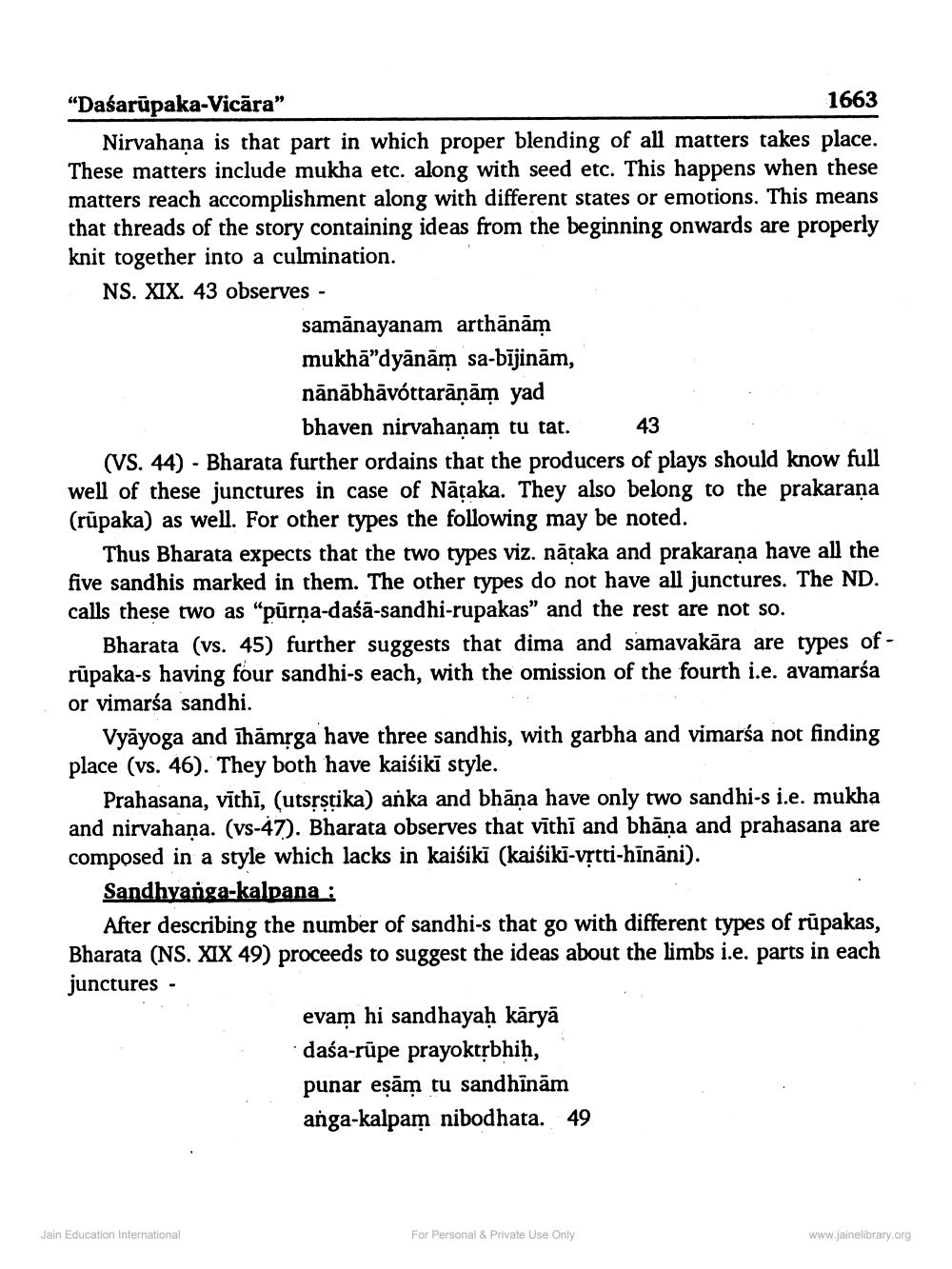________________
“Dasarūpaka-Vicăra"
1663
Nirvahana is that part in which proper blending of all matters takes place. These matters include mukha etc. along with seed etc. This happens when these matters reach accomplishment along with different states or emotions. This means that threads of the story containing ideas from the beginning onwards are properly knit together into a culmination. NS. XIX. 43 observes -
samānayanam arthānām mukhā”dyānām sa-bījinām, nānābhāvóttarāņām yad
bhaven nirvahanam tu tat. 43 (VS. 44) - Bharata further ordains that the producers of plays should know full well of these junctures in case of Nātaka. They also belong to the prakarana (rūpaka) as well. For other types the following may be noted.
Thus Bharata expects that the two types viz. nataka and prakarana have all the five sandhis marked in them. The other types do not have all junctures. The ND. calls these two as "pūrņa-daśā-sandhi-rupakas” and the rest are not so.
Bharata (vs. 45) further suggests that dima and samavakāra are types of - rūpaka-s having four sandhi-s each, with the omission of the fourth i.e. avamaría or vimarsa sandhi.
Vyāyoga and Thāmrga have three sandhis, with garbha and vimarśa not finding place (vs. 46). They both have kaiśiki style.
Prahasana, vīthi, (utspstika) anka and bhāna have only two sandhi-s i.e. mukha and nirvahaņa. (vs-47). Bharata observes that vīthi and bhāna and prahasana are composed in a style which lacks in kaiśiki (kaiśiki-vrtti-hīnāni).
Sandhyanga-kalpana :
After describing the number of sandhi-s that go with different types of rūpakas, Bharata (NS. XIX 49) proceeds to suggest the ideas about the limbs i.e. parts in each junctures -
evam hi sandhayaḥ kāryā daśa-rūpe prayoktrbhiḥ, punar eşām tu sandhīnām anga-kalpam nibodhata. 49
Jain Education International
For Personal & Private Use Only
www.jainelibrary.org




